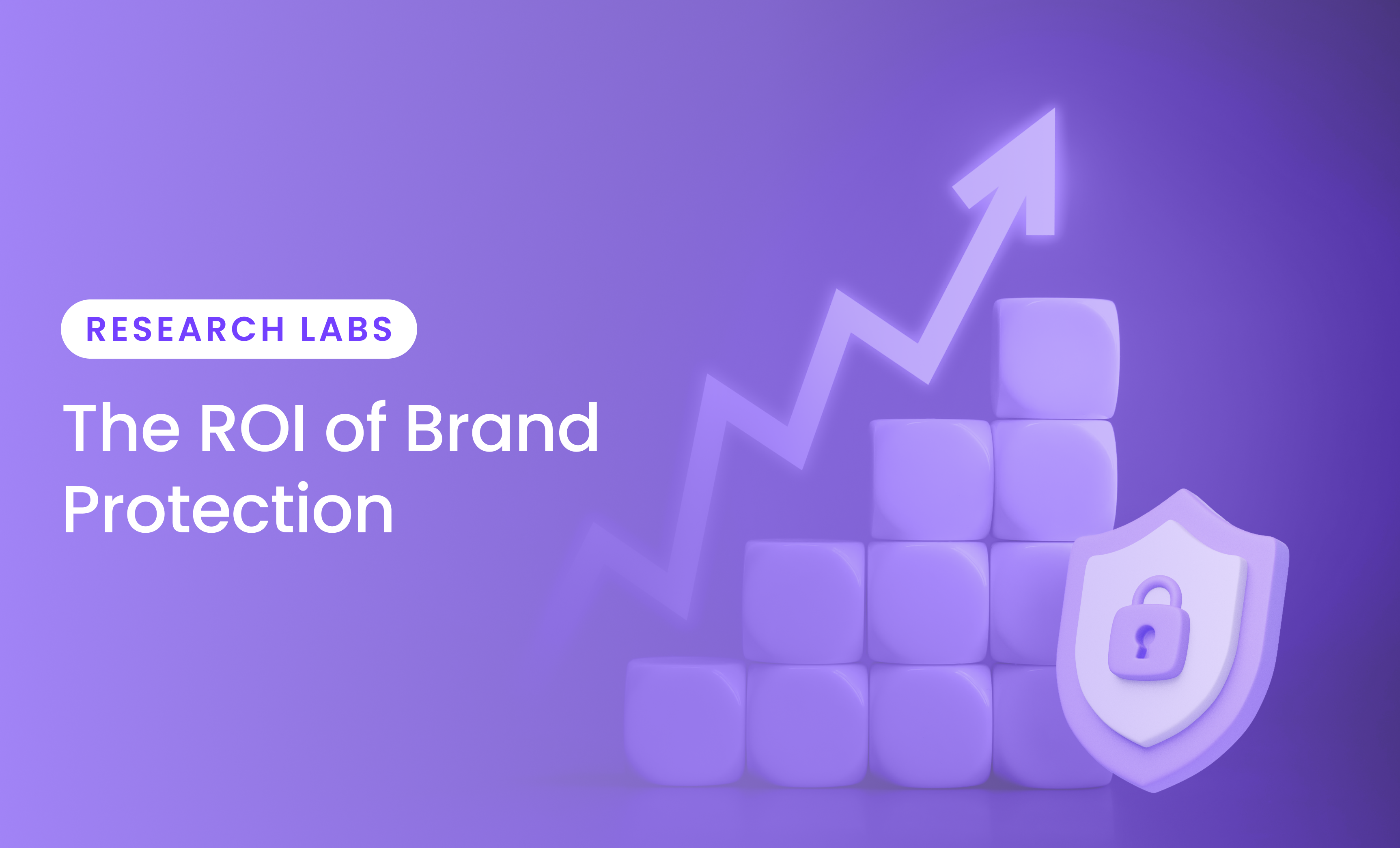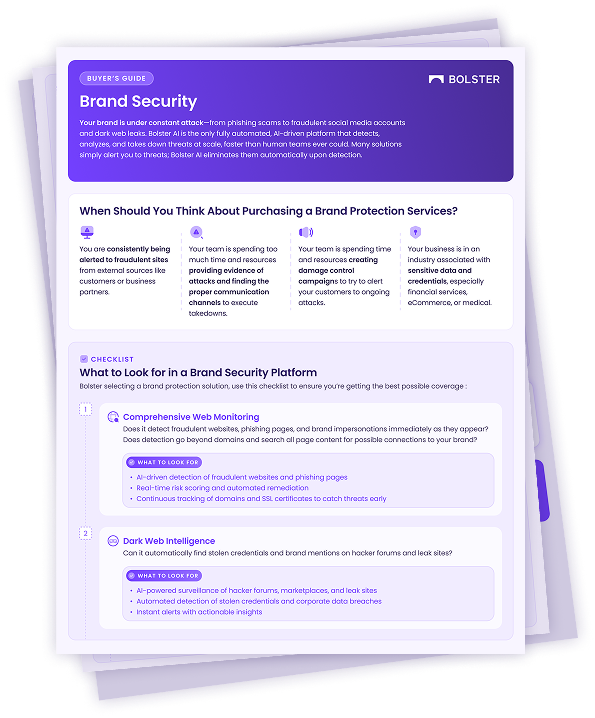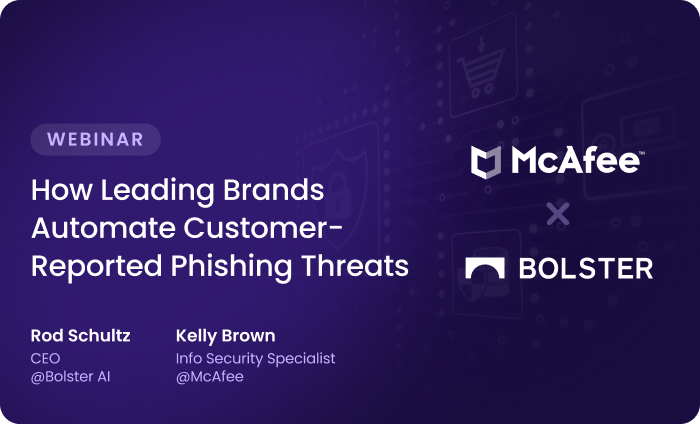Brand abuse isn’t just a nuisance—it’s a threat to your revenue, reputation, and long-term growth. From phishing scams to counterfeit goods to fake websites, bad actors are targeting your brand across the digital landscape. And while many businesses still view brand protection as a cost center, the reality is far more strategic: investing in anti-fraud and brand protection measures delivers measurable ROI. In this post, we break down exactly how, backed by real-world examples and actionable metrics.
What Does Brand Protection ROI Look Like?
Brand protection ROI measures the financial return your business receives from investments in defending your brand online. This includes stopping counterfeit sales, shutting down impersonation scams, reducing customer support costs, and preventing reputation damage. Done right, it’s not just about risk reduction—it’s about revenue retention, operational efficiency, and brand trust.
At Bolster, we recommend evaluating ROI through four key lenses: revenue recovered by disrupting fraud, cost savings in legal, support, and compliance, improved customer trust and retention, and brand valuation and long-term resilience.
The Rising Cost of Brand Abuse
Brand abuse is more pervasive—and more sophisticated—than ever. Fraudsters impersonate trusted domains, launch phishing campaigns, and flood marketplaces with counterfeit products. The result? Lost revenue, reputational harm, and customer churn. Brand impersonation is particularly costly. When customers fall for fake websites or phishing emails, it’s your brand that takes the hit—even if you weren’t directly involved. The erosion of trust can take years (and millions of dollars) to rebuild.
In 2019, Alibaba struggled with an influx of counterfeit listings for luxury brands like Gucci and Louis Vuitton. The damage wasn’t just to those brands—it undermined confidence in Alibaba’s entire platform, prompting lawsuits and costly reform efforts.
The Cost of Inaction Is Higher Than You Think
When companies hesitate to invest in proactive protection, the results are predictable: higher fraud losses, rising legal bills, and declining customer trust. Regulatory penalties also loom large—data breaches and impersonation scams can lead to significant fines and compliance failures.
British Airways was fined £183M under GDPR after a data breach affected over 500,000 customers. While not a brand impersonation case, it underscores the financial consequences of underinvesting in digital security.
Compare that to brands that take action early. Rolex, long a target of counterfeiters, cracked down with serial numbers, holograms, and global monitoring. The result? Lower counterfeit volume and restored consumer confidence—without sacrificing premium brand positioning.
How Anti-Fraud Measures Drive ROI
Early detection saves revenue. Real-time detection systems—especially those powered by AI—help catch impersonation threats before they reach customers. This stops revenue loss at the source and reduces downstream impacts like chargebacks or PR crises. At Bolster, our customers routinely see phishing and impersonation sites taken down in minutes—not days or weeks—thanks to automated threat detection and takedown capabilities.
Proactive protection reduces legal and operational costs. Stopping threats early means fewer lawsuits, lower compliance costs, and less strain on internal teams. Anti-fraud tools reduce the time and resources required to respond to incidents. Nike has publicly cited that its anti-counterfeit investments saved millions in legal and investigative expenses by preventing infringement before it escalated.
It also strengthens customer trust and retention. When customers feel secure, they stick around. Brands that visibly protect their users are more likely to earn repeat business and positive brand sentiment. Amazon’s success in maintaining consumer trust is partially due to aggressive takedown of fraudulent listings and impersonation attempts—a playbook many brands now seek to replicate.
Finally, strong brand protection builds better partnerships. Payment processors, marketplaces, and enterprise partners want to work with low-risk brands. Demonstrating proactive fraud prevention can lead to better terms, faster integrations, and more trusted relationships.
Metrics That Prove Brand Protection Pays Off
To quantify the ROI of your brand protection strategy, track these key metrics: reduction in fraud-related losses (how much you save by stopping scams early), recovered revenue (sales regained after removing counterfeits), customer support savings (fewer fraud complaints = lower operational burden), and brand valuation impact (a strong brand reputation drives investor confidence and long-term market value).
Puma implemented a global anti-counterfeiting strategy and reported a significant reduction in lost revenue—millions reclaimed from counterfeiters. Similarly, American Express has credited its improved fraud detection systems with reducing chargebacks and saving millions annually in customer service costs.
Conclusion: Brand Protection Is a Business Imperative
In today’s environment, brand abuse is constant—and costly. But it’s also controllable. Investing in brand protection is not just a defensive move—it’s a proactive strategy to safeguard your revenue, reduce costs, and deepen trust. Whether you’re fighting fakes in e-commerce, shutting down phishing scams, or protecting your customers from impersonation threats, the message is clear: protecting your brand pays.
Want to see the ROI of brand protection for your business? Let’s talk about how Bolster can help.




